As the automotive industry leans ever more toward electrification, the competition between top players is heating up. The BMW iX2 and the Mercedes EQB are two standout contenders in the electric SUV segment, each offering a compelling mix of performance, luxury, and innovative technology. In this comparison, we will delve into the specifications, performance metrics, and standout features that these vehicles bring to the table.
BMW iX2 vs Mercedes EQB – Performance, range & efficiency compared
Both models have their strengths – but which one suits you more?
Compare performance, efficiency, price and space directly: BMW iX2 or Mercedes EQB?
Overview of the BMW iX2
The BMW iX2 is the latest addition to the BMW electric family, featuring a striking SUV design with a commitment to sustainability and performance. Offered in two variants, the iX2 comes with a choice of Front-Wheel Drive or All-Wheel Drive, powered by electric motors delivering either 204 or a commendable 313 horsepower. Its electric range stands at an impressive 459 km, making it a solid choice for both urban driving and longer journeys.
Highlights of the Mercedes EQB
The Mercedes EQB is a versatile SUV with up to four powertrain options, allowing customers to select between 190 and 292 horsepower. With a slightly larger battery capacity than the iX2, ranging from 66.5 to 70.5 kWh, the EQB boasts an electric range of up to 533 km, making it a strong contender for drivers seeking extensive travel autonomy. Known for its luxurious interior and advanced technology, the EQB encompasses the essence of the Mercedes-Benz brand.
Technical Comparisons
Performance Metrics
In terms of acceleration, the iX2 demonstrates a sporty character with a 0-100 km/h time of 5.6 seconds in its top variant, while the EQB's best acceleration time is slightly lagging at 6.2 seconds. However, the EQB pulls ahead with a higher torque output of 520 Nm compared to the iX2's 494 Nm, which may translate into better performance in real-world driving conditions.
Electric Range and Efficiency
The iX2 offers remarkable efficiency, consuming between 15.9 and 16.9 kWh per 100 km, compared to the EQB's consumption of up to 17.3 kWh. Despite this, the EQB clinches the crown with its maximum electric range of 533 km, surpassing the iX2, which is noteworthy in the realm of electric mobility.
Dimensions and Practicality
When assessing size, the EQB takes the lead in length, measuring 4684 mm compared to the iX2's 4554 mm. This is complemented by a slightly greater height for the EQB at up to 1689 mm, which can affect headroom and overall spaciousness within the cabin. However, the iX2 offers a more generous trunk capacity of 525 liters, overshadowing the EQB's 495 liters, making it an appealing option for those needing ample cargo space.
Innovative Features and Technology
Interior Technology
Both vehicles offer cutting-edge technology, but they do so in distinct styles. The iX2 presents an immersive driver experience with BMW's Curved Display—a blend of digital instrument cluster and infotainment that enhances usability. The accompanying BMW iDrive 8 ensures everything from navigation to entertainment is seamlessly integrated.
On the other hand, the EQB boasts Mercedes' MBUX system, praised for its natural voice recognition and personalization capabilities. Its elegant cabin is designed to envelop passengers in luxury, complete with high-quality materials and ample ambient lighting options.
Safety and Driver Assistance
Safety features are abundant in both models. The BMW iX2 comes equipped with an advanced suite of driver assistance systems designed to enhance safety across the board. Similarly, the EQB excels with options like Active Distance Assist, ensuring peace of mind on the road.
Final Thoughts
Choosing between the BMW iX2 and the Mercedes EQB ultimately depends on the buyer's priorities. The iX2 offers spirited performance and superior cargo capacity, while the EQB shines in range and interior luxury. Both vehicles represent a leap toward sustainable mobility, and either choice will not disappoint discerning electric SUV buyers.
Here’s where it gets real: The technical differences in detail
Costs and Efficiency:
Looking at overall running costs, both models reveal some interesting differences in everyday economy.
BMW iX2 has a minimal advantage in terms of price – it starts at 43100 £, while the Mercedes EQB costs 45900 £. That’s a price difference of around 2755 £.
In terms of energy consumption, the advantage goes to the Mercedes EQB: with 15.20 kWh per 100 km, it’s minimal more efficient than the BMW iX2 with 15.30 kWh. That’s a difference of about 0.10 kWh.
As for range, the Mercedes EQB performs somewhat better – achieving up to 535 km, about 57 km more than the BMW iX2.
Engine and Performance:
Power, torque and acceleration are the classic benchmarks for car enthusiasts – and here, some clear differences start to show.
When it comes to engine power, the BMW iX2 has a slight edge – offering 313 HP compared to 292 HP. That’s roughly 21 HP more horsepower.
In acceleration from 0 to 100 km/h, the BMW iX2 is slightly quicker – completing the sprint in 5.60 s, while the Mercedes EQB takes 6.20 s. That’s about 0.60 s faster.
In terms of top speed, the BMW iX2 performs somewhat better – reaching 180 km/h, while the Mercedes EQB tops out at 160 km/h. The difference is around 20 km/h.
There’s also a difference in torque: Mercedes EQB pulls barely noticeable stronger with 520 Nm compared to 494 Nm. That’s about 26 Nm difference.
Space and Everyday Use:
Whether family car or daily driver – which one offers more room, flexibility and comfort?
Both vehicles offer seating for 5 people.
In curb weight, BMW iX2 is slight lighter – 1960 kg compared to 2105 kg. The difference is around 145 kg.
In terms of boot space, the BMW iX2 offers barely noticeable more room – 525 L compared to 495 L. That’s a difference of about 30 L.
In maximum load capacity, the Mercedes EQB performs a bit better – up to 1710 L, which is about 310 L more than the BMW iX2.
When it comes to payload, BMW iX2 somewhat takes the win – 510 kg compared to 435 kg. That’s a difference of about 75 kg.
Who wins the race?
The BMW iX2 proves to be edges ahead and therefore becomes our DriveDuel Champion!
BMW iX2 is the better all-rounder in this comparison.
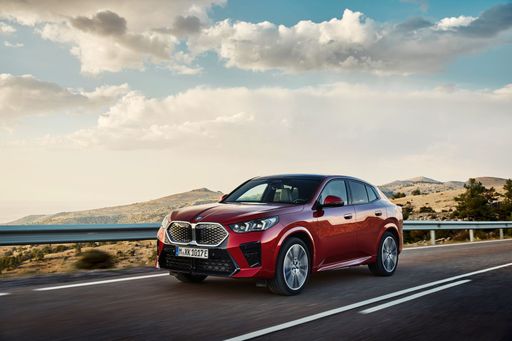 @ BMW Group Press
@ BMW Group Press
BMW iX2
BMW iX2
The BMW iX2 cuts a sporty silhouette and delivers the buttoned-up premium feel you expect from the brand, wrapped in a compact electric package that’s easy to live with. It’s a smart pick for buyers who want engaging city driving, clever cabin tech and a touch of eco-conscious flair without giving up the fun behind the wheel.
details @ BMW Group Press
@ BMW Group Press
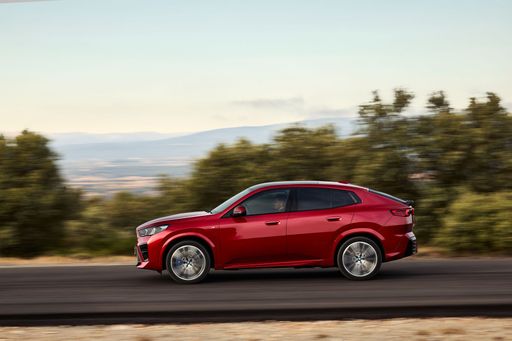 @ BMW Group Press
@ BMW Group Press
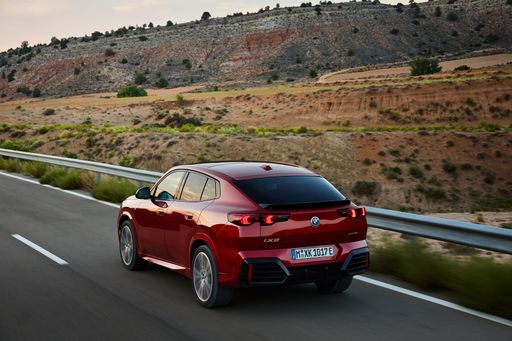 @ BMW Group Press
@ BMW Group Press
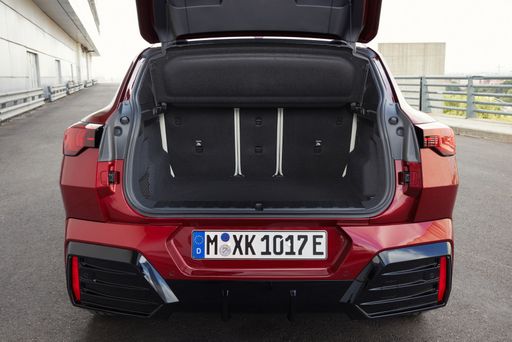 @ BMW Group Press
@ BMW Group Press
Mercedes EQB
The Mercedes EQB is an electric compact SUV that dresses Mercedes' premium feel in practical clothing, with flexible seating and a serene, composed ride that turns everyday errands into a small luxury. It won't thrill the enthusiast, but for buyers who want a smart, spacious and well-made EV with tasteful tech and real-world usability, the EQB is a sensible, slightly buttoned-up choice that impresses without shouting.
details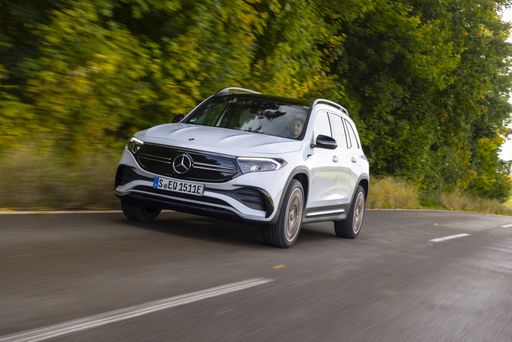 @ Mercedes-Benz Group Media
@ Mercedes-Benz Group Media
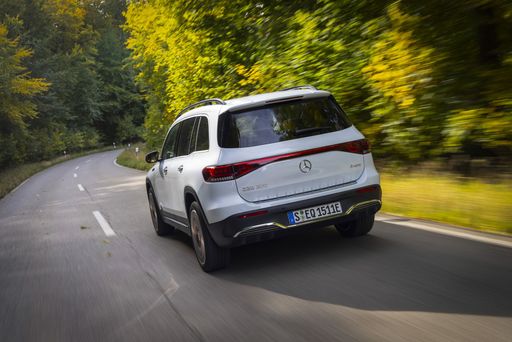 @ Mercedes-Benz Group Media
@ Mercedes-Benz Group Media
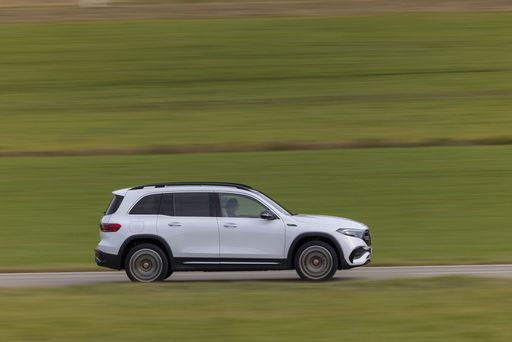 @ Mercedes-Benz Group Media
@ Mercedes-Benz Group Media
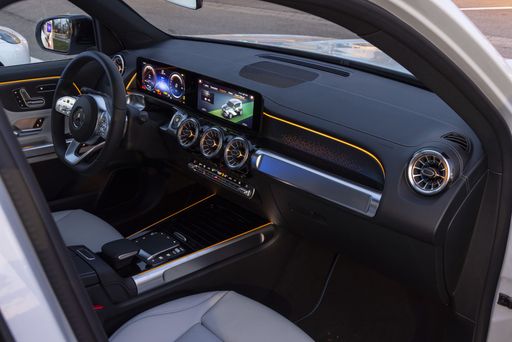 @ Mercedes-Benz Group Media
@ Mercedes-Benz Group Media
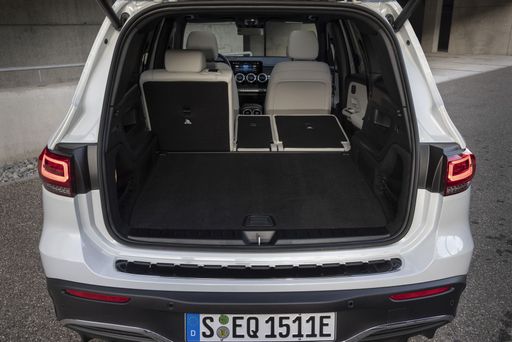 @ Mercedes-Benz Group Media
@ Mercedes-Benz Group Media
 @ BMW Group Press
@ BMW Group Press
|
 @ Mercedes-Benz Group Media
@ Mercedes-Benz Group Media
|
|
|
|
Costs and Consumption |
|
|---|---|
|
Price
43100 - 54800 £
|
Price
45900 - 58900 £
|
|
Consumption L/100km
-
|
Consumption L/100km
-
|
|
Consumption kWh/100km
15.3 - 16.3 kWh
|
Consumption kWh/100km
15.2 - 17.2 kWh
|
|
Electric Range
449 - 478 km
|
Electric Range
468 - 535 km
|
|
Battery Capacity
64.80 kWh
|
Battery Capacity
70.50 kWh
|
|
co2
0 g/km
|
co2
0 g/km
|
|
Fuel tank capacity
-
|
Fuel tank capacity
-
|
Dimensions and Body |
|
|---|---|
|
Body Type
SUV
|
Body Type
SUV
|
|
Seats
5
|
Seats
5
|
|
Doors
5
|
Doors
5
|
|
Curb weight
1960 - 2095 kg
|
Curb weight
2105 - 2170 kg
|
|
Trunk capacity
525 L
|
Trunk capacity
495 L
|
|
Length
4554 mm
|
Length
4684 mm
|
|
Width
1845 mm
|
Width
1834 mm
|
|
Height
1560 mm
|
Height
1654 - 1689 mm
|
|
Max trunk capacity
1400 L
|
Max trunk capacity
1710 L
|
|
Payload
500 - 510 kg
|
Payload
435 kg
|
Engine and Performance |
|
|---|---|
|
Engine Type
Electric
|
Engine Type
Electric
|
|
Transmission
Automatic
|
Transmission
Automatic
|
|
Transmission Detail
Reduction Gearbox
|
Transmission Detail
Reduction Gearbox
|
|
Drive Type
Front-Wheel Drive, All-Wheel Drive
|
Drive Type
Front-Wheel Drive, All-Wheel Drive
|
|
Power HP
204 - 313 HP
|
Power HP
190 - 292 HP
|
|
Acceleration 0-100km/h
5.6 - 8.6 s
|
Acceleration 0-100km/h
6.2 - 8.9 s
|
|
Max Speed
170 - 180 km/h
|
Max Speed
160 km/h
|
|
Torque
250 - 494 Nm
|
Torque
385 - 520 Nm
|
|
Number of Cylinders
-
|
Number of Cylinders
-
|
|
Power kW
150 - 230 kW
|
Power kW
140 - 215 kW
|
|
Engine capacity
-
|
Engine capacity
-
|
General |
|
|---|---|
|
Model Year
2024
|
Model Year
2024 - 2025
|
|
CO2 Efficiency Class
A
|
CO2 Efficiency Class
A
|
|
Brand
BMW
|
Brand
Mercedes-Benz
|
What drivetrain options does the BMW iX2 have?
The BMW iX2 is available as Front-Wheel Drive or All-Wheel Drive.
The prices and data displayed are estimates based on German list prices and may vary by country. This information is not legally binding.
